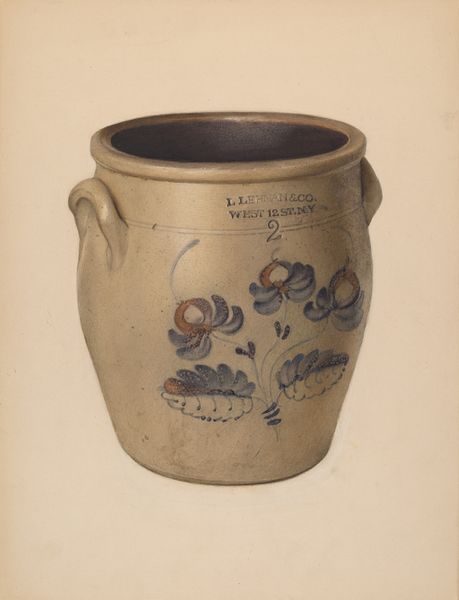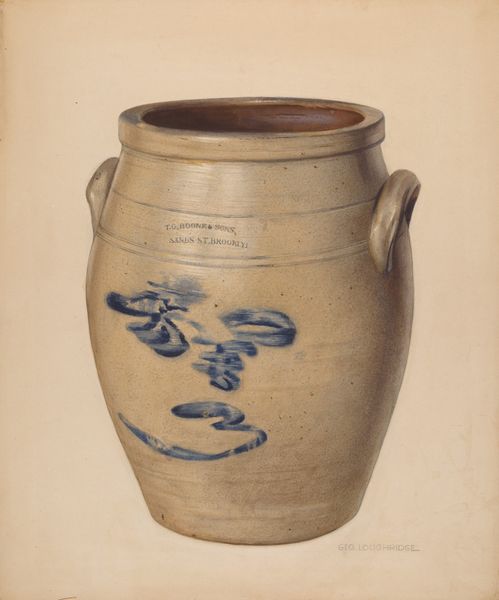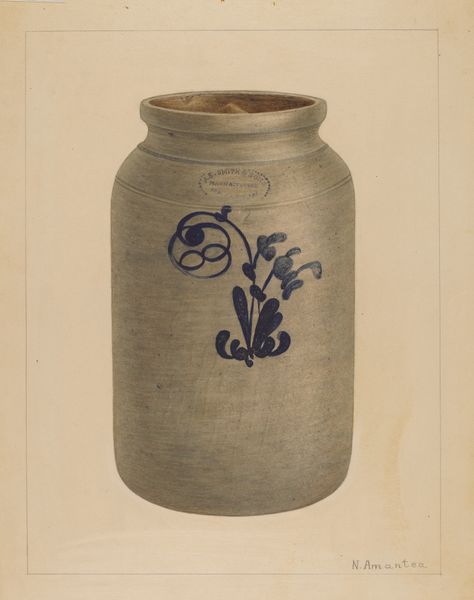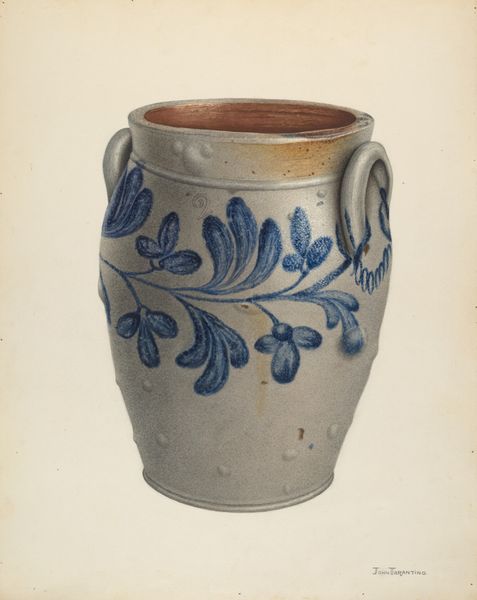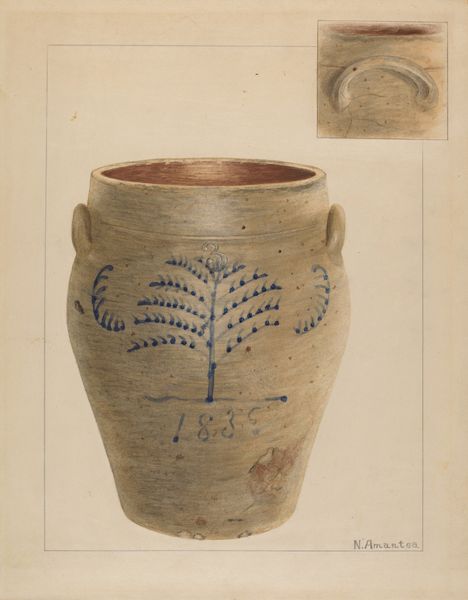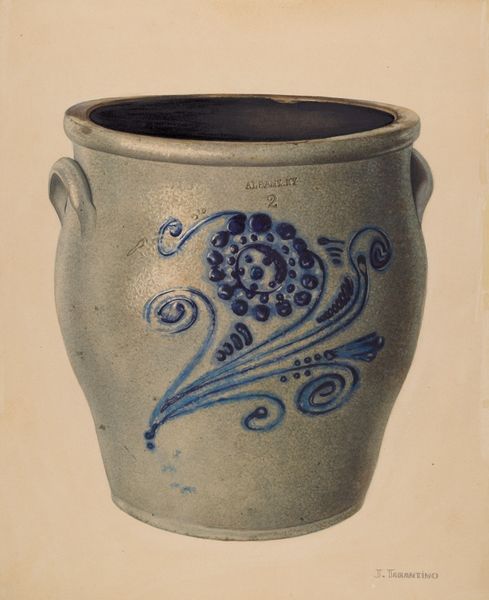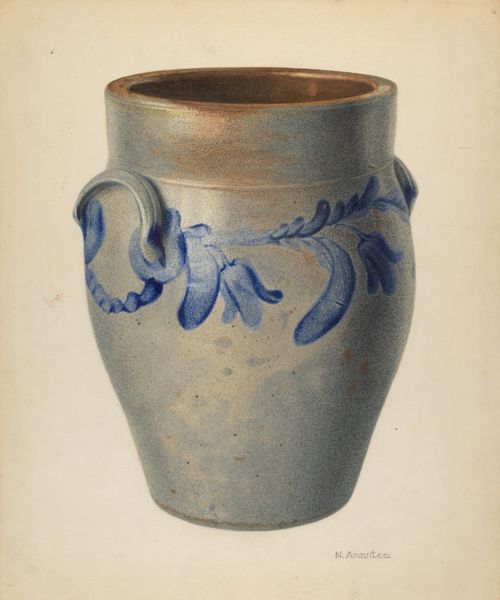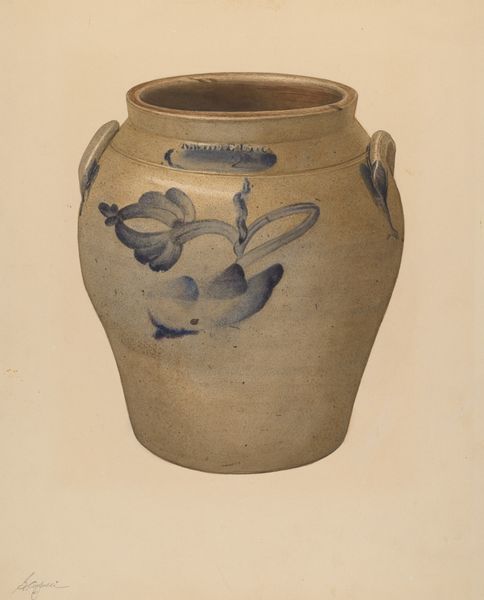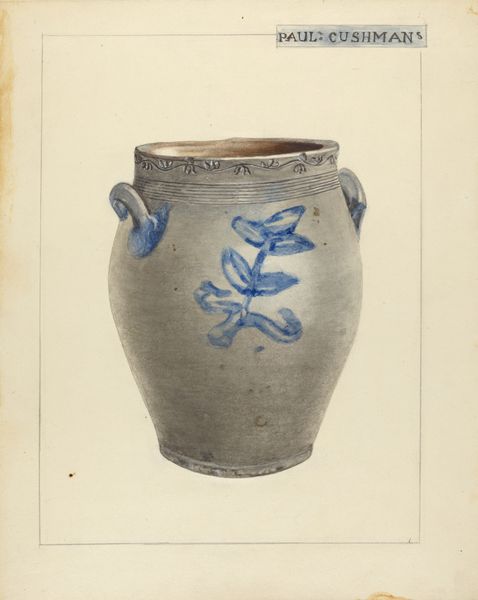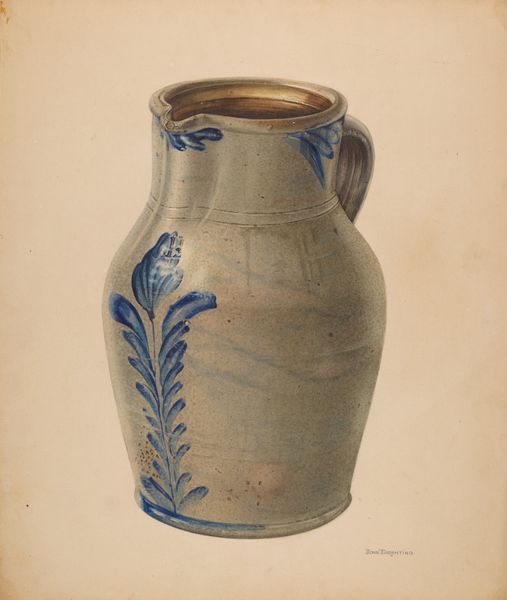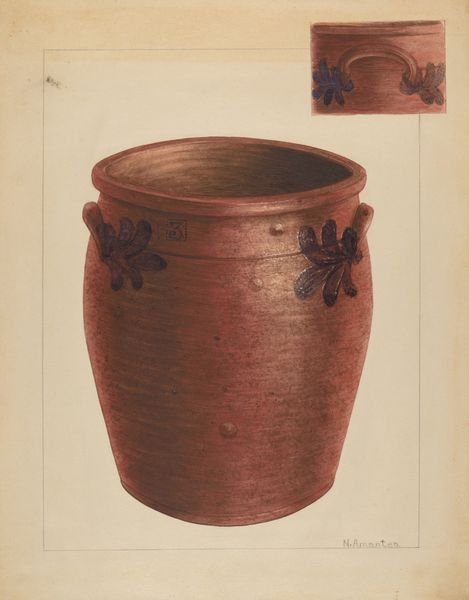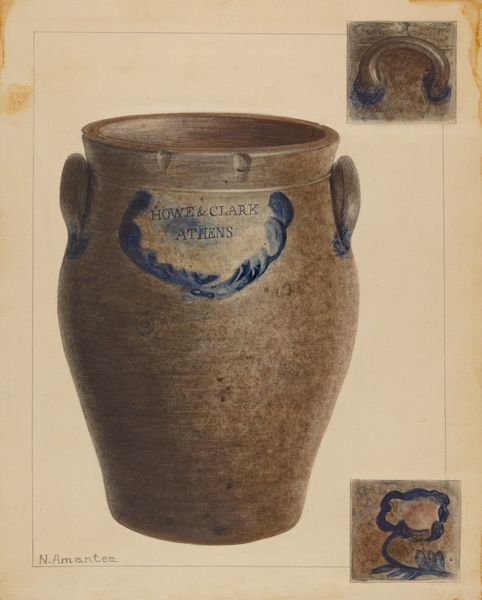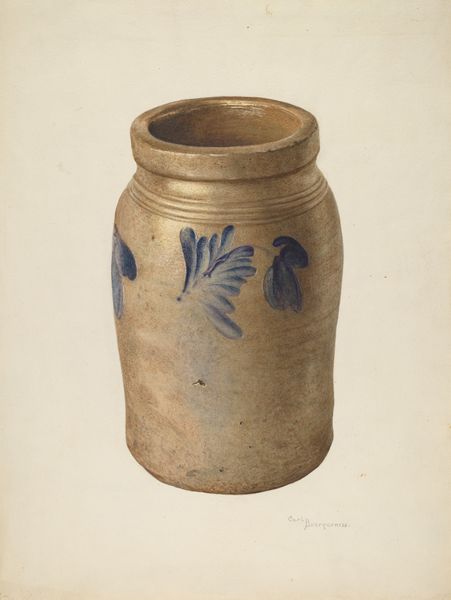
drawing, ceramic, earthenware
#
drawing
#
ceramic
#
earthenware
#
folk-art
#
ceramic
#
earthenware
#
decorative-art
#
watercolor
Dimensions: overall: 45.8 x 38 cm (18 1/16 x 14 15/16 in.) Original IAD Object: 11 5/8" High 9 1/2" Dia(top) 7 1/2" Dia(base)
Copyright: National Gallery of Art: CC0 1.0
Editor: Here we have "Crock," a drawing from around 1940 by Giacinto Capelli. The earthenware jar with a watercolor illustration looks like a common household object. What strikes me is its almost unassuming nature. What do you see in this piece, and how do you interpret its significance beyond its simple representation? Curator: It's easy to overlook, isn't it? But let’s consider its cultural context. The earthenware crock wasn't just a container; it represents labor, preservation, and often, a vital part of rural life. The decorative folk-art element suggests an attempt to bring beauty into everyday functional objects, subtly challenging the separation of art and utility. Who was this ‘Wale Warner’ of West Troy, whose name is on the vessel? The design elevates its presence as more than mere utilitarian. It makes you think, doesn't it, about labor, domesticity, and how the working class sought to assert their identity through decorated items. Editor: It does. So, you're saying that even seemingly simple domestic objects can be loaded with socio-political meanings about class and identity? Curator: Absolutely. The ‘craft’ or ‘folk’ aspect has been traditionally relegated to the realm of the ‘decorative’ which has been denigrated by a ‘high art’ establishment dominated by white male authority. By bringing that marginal craftwork into the fold, into a museum, it subverts the existing power structures and reclaims it as fine art. What do you think the implications of displaying such an ordinary, domestic scene might be? Editor: It's kind of powerful. By seeing an image of an everyday object displayed like this, it reminds me how much art can be found in our surroundings. Curator: Exactly, we’re acknowledging the art in ordinary lives, which has profound implications in terms of elevating different social voices.
Comments
No comments
Be the first to comment and join the conversation on the ultimate creative platform.
